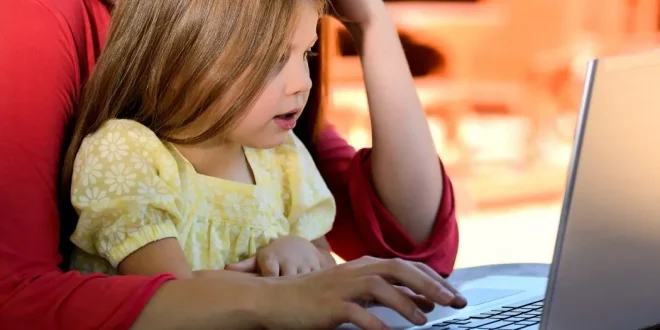Last Updated on September 6, 2025 by Muhamed Elmesery
Modern communication tools have helped in creating new educational styles that serve the educational system in an innovative manner, free them from the constraints of time and space, and address their economic, political and social problems. Distance learning is considered as one of the most important of these new educational styles.
Create a Free Virtual Labs Account Now!
Table of Contents
The concept of distance learning:
There are many different expressions for distance learning. It is known as correspondence education, open education, distributed education. There are also other expressions such as home study, independent study, study from abroad, distance Learning, distributed learning, remote learning, and distance education.

There are different definitions for distance learning:
UNESCO defines distance education as “an educational process in which all or most of the teaching process occurs by a distant person from the student, with the emphasis that most communication between teachers and learners are through a mediator, whether electronic or printed.”
The American Association for Distance Learning defines it as “the process of acquiring knowledge and skills by mediator that transfers the information, including all kinds of technology and different learning styles of distance learning.”
There are many definitions of distance learning, but they all agree on two basic principles:
- Multiple media (printed or electronic).
- The separation of the teacher from the learner.
History of Distance Education:
Distance education has origins in Islamic civilization. It was adopted by Muslims as a way to memorize the Holy Quran through Quran memorization schools where the student did not meet with the teacher except when the student was reciting the Quran after finishing the memorization.
In 1963, UK established the University of Air, and was later renamed the Open University where radio and television were the main elements in the education process in addition to correspondence. Thus, this type of education was announced. The university opened in 1969, and studying began in 1971 and attracted thousands of students in various fields. In 1982, The National Council for Distance Education received strong financial support from the World Bank for International Development and UNESCO, and became the International Council for Distance Learning.

According to a report by UNESCO in 2002, distance learning went through four phases before becoming what it is today:
- Phase 1: By the end of the nineteenth century, correspondence systems have emerged and are still prevalent in many developing countries, where these systems rely on printed resources and accompanying instructions that can contain audio and visual media. The post became the method of communication between the student and the teacher.
- Phase 2: Various technologies, such as television, radio, satellite, and space stations are used as a way to achieve communication and to provide live or recorded lectures.
- Phase 3: open universities often use multimedia includes electronic books, sounds, video and computer.
- Phase 4: Internet-based systems in which the educational materials include multimedia and electronic devices, which are transmitted to individuals through the computer with easy access to databases and electronic libraries. Through these systems, the interaction between the teacher and the learner, and the learners and their colleagues, can be achieved in simultaneously through chat rooms and video conferencing or asynchronously using email and discussion forums.
The State of Lebanon was a pioneer in the field of distance education, where the department of distance education was opened at the University of Brcham, in Syria at the University of Aleppo, Baath and Teshreen, and in the State of Palestine at Al Quds Open University. Then, the State of Sudan established the field of distance education at Al-Jazeera University, and in the State of Qatar the Evening Parallel Education Program established by the University of Qatar in 1998, and it was exclusively for Arabian Gulf students. In Tunisia, there is the Higher Institute of Education and Continuing Training. In Algeria, there are distance learning systems at the University of Continuing Education, and in the Kingdom of Saudi Arabia at King Abdul Aziz University and King Saud University.
Praxilabs provides a variety of 3D science experiments to support distance learning process.

Principles of Distance Education:
Distance education institutions have some principles which were referred to by (Suzanne Al-Mahdi, 2008, p. 704, Net 3) :
- The principle of the uniqueness of education: that is, the educational process must be designed in a way that corresponds to individual preparations, abilities, tendencies, trends, and speed of learning.
- The principle of the learner who controls to the process of learning: that is, the learner seeks the education by himself, and have a real desire to study.
- The principle of continuing education: that is, education is a lifelong process. A person may wish to develop themselves professionally, scientifically or culturally, and must be given the opportunity to do that at any time or place.
- The principle of self-learning: the student study alone and often self-dependent.
- The principle of democratic education: education is the prerogative of every member of society regardless of colour, race, religion, or age.
Techniques used in distance education:
Distance education is distinguished from traditional education by its compatibility with modern technology in education such as the use of television, the Internet and the satellite in the process of transferring information, referred to by (Al-Mousa and Mubarak, 2005, p. 58) and (Sawy, 2008, pp. 663-666, 17):
- Phonetic material: audio teaching ways include interactive telephone communication techniques through group voice communication and recorded tapes.
- Audio-visual material: Including films, videos, and video conferences.
- Satellite television broadcasting: It assists in education by increasing the number of learners.
- Internet technologies: characterized by lack of boundaries and low cost.
 PraxiLabs A virtual world of science
PraxiLabs A virtual world of science






